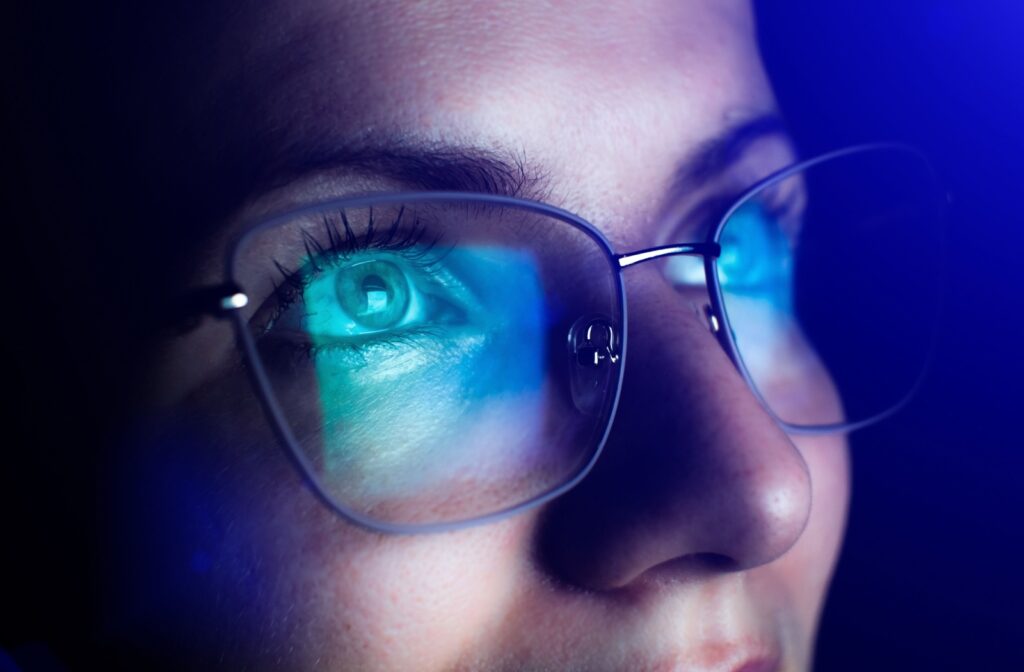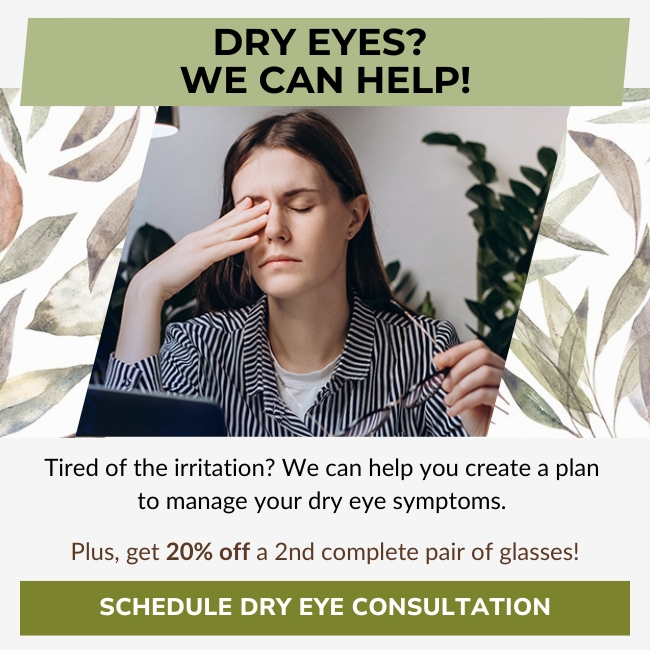In today’s digital world, screen time is part of daily life—especially for those working on computers for hours at a time. If you’ve ever ended the day with tired eyes, a headache, or blurry vision, you’re not alone. Many people are now turning to computer glasses to find relief.
So, do you need a different prescription for computer glasses? In most cases, yes—because they’re specifically designed for the distance between your eyes and your screen, and include special features to reduce strain.
What Are Computer Glasses?
Computer glasses are a type of specialized eyewear designed to help ease the visual demands of prolonged screen viewing. Unlike regular eyeglasses, they’re tailored to mid-range distances—typically around 20 to 26 inches away—ideal for use at a desktop or laptop.
They often include features such as:
- Anti-reflective coatings can minimize screen glare & improve contrast
- Blue light filters help reduce exposure to high-energy visible light emitted by screens
- Custom prescriptions help reduce the effort your eyes need to focus at screen distance
Even if your regular prescription works well for distance or reading, it might not provide the clarity and comfort your eyes need at computer range. That’s where computer glasses step in.
Why Your Everyday Glasses Might Not Cut It
Most regular glasses are designed for general tasks, such as driving or reading. They’re typically single-vision, progressive, or bifocal lenses that serve multiple purposes.
However, these lens designs don’t account for the unique demands of screen use—such as sitting at a fixed distance and angle for extended periods.
The right pair of computer glasses helps reduce the strain placed on your eye muscles while you’re focused on a screen. Without this specific correction, your eyes are constantly adjusting, which can lead to:
- Headaches or strained eyes
- Dry or irritated eyes
- Blurry or double vision
- Shoulder & neck pain from improper posture
And here’s the thing: even people who don’t usually need prescription glasses may still benefit from computer glasses. That’s because these glasses aren’t just about vision correction—they’re about visual comfort during digital tasks.
Recognizing Digital Eye Strain
If you’re wondering whether computer glasses are right for you, start by checking for symptoms of digital eye strain, also known as computer vision syndrome. You might notice:
- Light sensitivity
- Tired, burning, or scratchy eyes
- Trouble focusing or concentrating
- Blurry or double vision
Digital eye strain is often caused by a combination of factors, including overworked eye muscles, reduced blinking, and glare from your screen. Studies show that we blink significantly less when using screens, which can quickly dry out the surface of the eyes.
Computer glasses help by giving your eyes a visual “break.” With the correct focal length and coatings to reduce glare and blue light, they ease the effort your eyes put in to maintain clear, comfortable vision throughout the day.
How to Get the Right Fit
To find out if you need computer glasses—and to make sure you get the right kind—you’ll need a comprehensive eye exam. Your optometrist can determine the proper focal length and lens type based on your screen use, posture, and existing prescription.
Here are some things to consider:
- Screen distance: How far do you sit from your screen? Distance helps determine the correct lens power.
- Lens type: Options include single-vision (for screen distance only), occupational progressives (for screen & near work), or bifocals.
- Frame fit: Your glasses should sit comfortably for hours of wear & align well with your line of sight.
- Additional features: You can add anti-glare coatings, blue light protection, or lens tints for extra comfort.
A pair of well-designed computer glasses doesn’t just improve visual comfort—it can also improve productivity, reduce fatigue, and help you feel more comfortable throughout your workday.

Support Your Eyes Beyond Glasses
While computer glasses can make a big difference, other simple habits can help reduce digital eye strain:
- Use the 20-20-20 rule: Every 20 minutes, look 20 feet away for 20 seconds.
- Keep your screen clean: Dust & fingerprints increase glare, leading to tired eyes.
- Adjust screen position: View your screen an arm’s length away & just below eye level.
- Stay hydrated & blink more: Healthy habits help support your tear film & reduce dryness.
If you’re still experiencing discomfort despite these strategies, it may be time to revisit your eyewear or consider dry eye treatment options in combination with computer lenses.
Get Help with Computer Glasses from Experienced Professionals in Barrie
Whether you’re working from home, gaming, or just spending hours on your devices, your eyes deserve support. At Dr. Chris Schell, we’re focused on personalized digital eye care solutions.
When you’re struggling with tired eyes, headaches, or discomfort after screen use, our team is here to help you find the right prescription for your computer glasses. Book an eye exam today to find the right computer glasses for your screen time needs.



